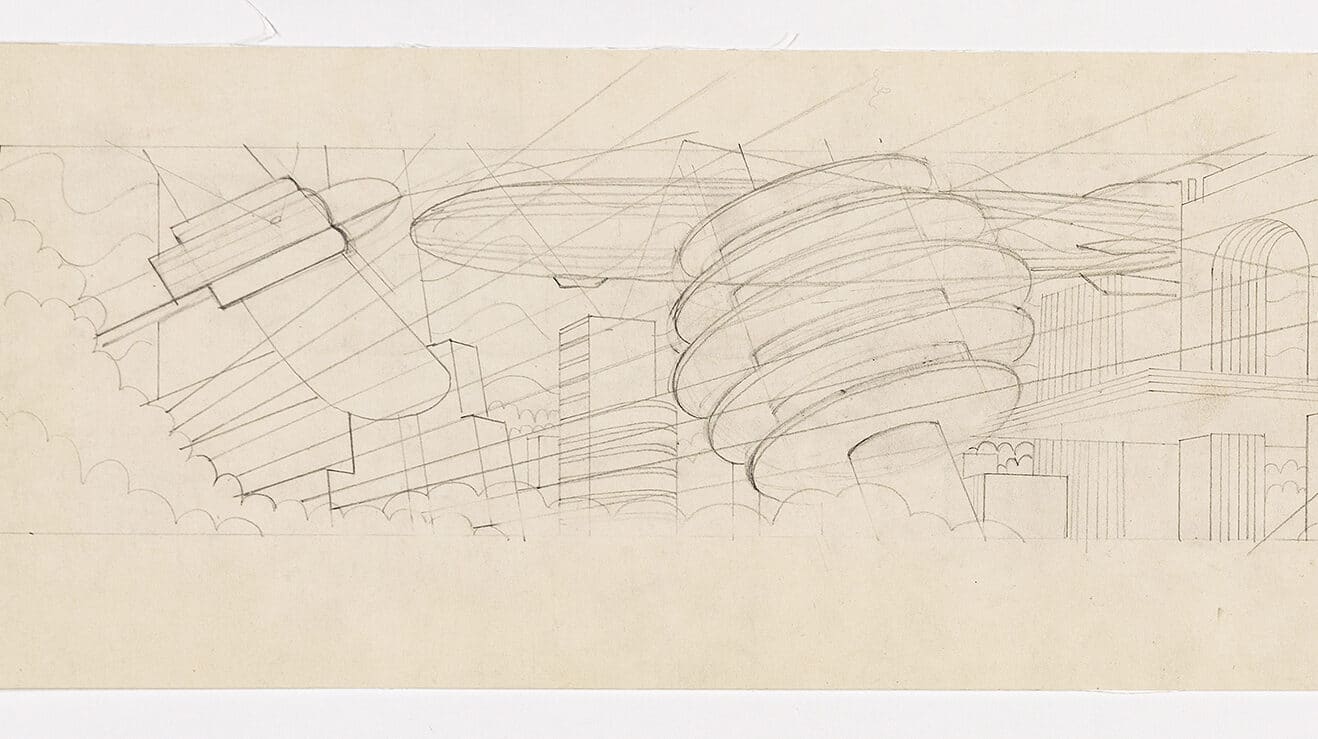The Future City

Antonio Sant’Elia foresees the technological cities of the mid to late 20th century. High-rise towers shooting skyward, train lines and highways articulated as horizontally streaking into vanishing points, and aeroplanes arriving and departing omnidirectionally. Similarly, Winold Reiss’s Future City: Study for a Mural, is an homage to technological advancement, and the potential of the modern world.
The Future City floats in the clouds. It radiates energy whilst spheroid multi-storey structures shoot walkways between one another, and aircrafts rise over the city.

Reiss uses the buildings of 1930s New York as the point of departure for his portrayal of the future city.
Perspectival techniques of foreshortening, and panorama are employed to the extreme conveying dynamism and energy. The viewer is provided with an aspect beyond the limits of their human cone of vision; the multifaceted city is comprehendible in one view.

Made in the context of the great depression, the mural offers a geometric and forward striving vision for a society. Struggling to shrug off a devastating economic burden positivity radiates from the illustration. The mood is evocative of jazz age stylishness, and boundless confidence in modern technology, which will usher in a bright and hopeful new future.
Paul Maher is currently an Irish Architect, living and working in London.
This text was entered into the 2020 Drawing Matter Writing Prize. Click here to read the winning texts and more writing that was particularly enjoyed by the prize judges.
